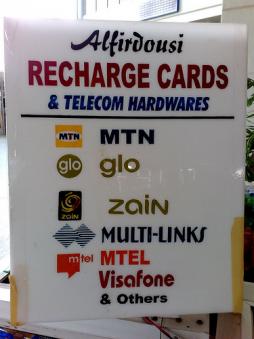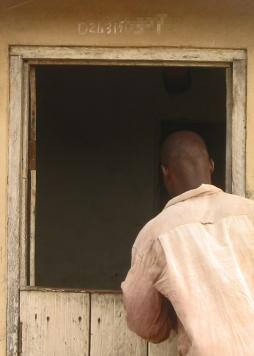scale
Posted by EKStallings on Oct 19, 2011
Despite possibilities of scaling projects with technology, many technology-based initiatives in social and economic development have failed to make it past early pilot stages or grow to scale. This study by Hystra, in collaboration with Ashoka and TNO, examines what successful ventures within four sectors can teach us about models for scaling Information and Communications Technology (ICT) -based applications and projects aimed at reaching bottom-of-the-pyramid customers (referred to as Base of the Pyramid in the report). The researchers focused specifically on these sectors: education, health, agricultural services, and financial services.
What Did the Study Review?
Initially considering 280 projects as promising models, researchers found that over half were not worth researching because projects lacked sustainability or replicatibility. Many of the projects were dead pilot projects or were small with no sign of the possibility or intent of scaling in size or reach.
From there, researchers homed in on 16 groundbreaking cases. These projects had reached scale (defined as having 10,000 clients or more) or had the potential to do so. All projects were assessed against three criteria: Is the solution solving the (specified) problem? Is the project economically viable? Is the project scalable and replicable? The researchers grouped projects into specific clusters based on business model type. All projects researched were value-added or market-based, because of the researchers’ belief that such models increase project sustainability and client investment in the project.
The models that the researchers looked at varied. For instance, researchers asked whether end-users accessed the technology themselves as opposed to being delivered trough an intermediary.
Posted by MarkWeingarten on Jan 19, 2011
Barriers and Gaps Affecting mHealth in Low and Middle Income Countries: Policy White Paper data sheet 1805 Views
Author:
Mechael, Patricia, Hima Batavia, Nadi Kaonga, Sarah Searle, Ada Kwan, Adina Goldberger, Lin Fu, and James Ossman
Abstract:
Still in its infancy, mHealth, the use of mobile technologies for health, runs the risk of not realizing its full potential due to small-scale implementations and pilot projects with limited reach. To help shed light on these issues, the mHealth Alliance commissioned an in-depth exploration of the policy barriers and research gaps facing mHealth. The review identified significant gaps in mHealth knowledge stemming from the limited scale and scope of mHealth implementation and evaluation, a policy environment that does not link health objectives and related metrics to available mHealth tools and systems, and little investment in cost-benefit studies to assess mHealth value and health outcomes research to assess success factors and weed out poor investments.
As illustrated throughout the literature, the current single-solution focus of mHealth needs to be replaced by using mHealth as an extension and integrator of underlying health information systems along the continuum of care. Creating a strong collaborative foundation will be instrumental in driving and positioning public and private investment in mHealth in a way that contributes to achieving improved access to health information and services, health outcomes, and efficiencies.
Within such structured paradigms, planning for infrastructure investment and human resources capacity strengthening and identifying public and private stakeholders within the ecosystem to take leadership for the development, testing, implementation, and evaluation of mHealth activities can be appropriately mapped and planned and mHealth services more effectively extended to support the health of citizens and the work of health professionals and administrators.
Posted by MelissaUlbricht on Jan 09, 2011
Mobile-based projects for social change can be found in any issue area: mobile health, mobile money, initiatives that promote advocacy, citizen journalism, democratic participation, and economic livelihoods. While projects vary in scope, objectives, and platforms, one consistency between many successful projects is a good working relationship with the mobile network operator in a given country.
Mobile network operators, or MNOs, go by many names: mobile providers, cell providers, telecommunications companies. In this article, we focus on MNOs in the traditional sense: companies that provides mobile network services.
Posted by MohiniBhavsar on Aug 10, 2010
Mobile Monitoring and Evaluation: Experiences from Pilot to National Scale Implementation data sheet 1752 Views
Author:
Eben Conley, Sarah Brown, Kieran Scharpey-Schafer
Abstract:
Implementation of Monitoring and Evaluation (M&E) programmes are predominantly dependant on paper forms to measure organisational impact. These forms are then manually captured into an electronic system for analysis. This methodology results in high costs, questionable data accuracy and long turnaround times. Additionally inadequately skilled employees, remote locations and high staff turnover add to these challenges. A solution that allows for flexibility and extendibility within the NGO sector is required to decrease costs and allow for NGO’s to focus their attentions on their main areas of expertise. One potential solution is the use of mobile phones to collect the data.
This paper presents the experiences of implementing a mobile phone based M&E system and the lessons learnt in scaling this system from pilot to national. These include system flexibility, easy-to-learn interfaces, identification of champions and detailed site assessments. Today the system is being used nationally, with over 70 000 electronic surveys submitted and over 300 facilitators using the system.
Posted by MohiniBhavsar on Aug 03, 2010
The Swedish International Development and Cooperation Agency (Sida) recently published a report, The Innovative Use of Mobile Applications in East Africa, that provides an overview of the current state of mobile phone applications for social and economic developments in East Africa. The report seeks to answer “what hinders the take-off of m-applications for development in East Africa" and asks what role donors should play.
While mobile phones are the main channel for information in East Africa, with mobile penetration covering over 40% of the population, sustainable, scalable mobile services for social and economic development are limited. The report is supported by secondary data, statistics, and field work carried out in Kenya, Rwanda and Tanzania, along with numerous interviews, meetings and discussions with key stakeholders in East Africa. Major trends in mobile usage, barriers for increased use of m-applications, as well as opportunities for scaling are discussed.
Barriers: High Cost of Ownership.
Posted by KatrinVerclas on Jan 11, 2010
Information and Communication Technologies (ICTs) for social and economic development in emerging economies have long been a focus of governments, the private sector, and most certainly donors and international development agencies. Yes, despite all the attention garnered on this field, we are seeing a checkered history of ICTs as a tool for development, with both successes and significant failures littering the landscape.
With the phenomenal growth of mobile technology in the last ten years, the attention of donors, governments, and multi-lateral and international agencies has now turned to the telecommunications sector and mobile technologies as channels to deliver services and products to citizens at the bottom of the economic pyramid.
Posted by KatrinVerclas on Oct 08, 2009
As part of our 'deconstructing mobile' series, we have been looking closely at the claims that have been made about mobile technology for a more realistic assessment of mobiles in social development that is based on data, rather than hype. Unlike more recent reporting on the topic, the Financial Times has an interesting article that questions whether mobile tech can actually "fill the gap left by underdeveloped healthcare system,' particularly in Africa.
As has been reported, the challenges in delivering health care in many African countries are stark. As the Financial Times points, out, there is 'an acute shortage of resources and trained staff means that more than 50 percent of the region’s population is estimated to lack access to modern healthcare facilities."



